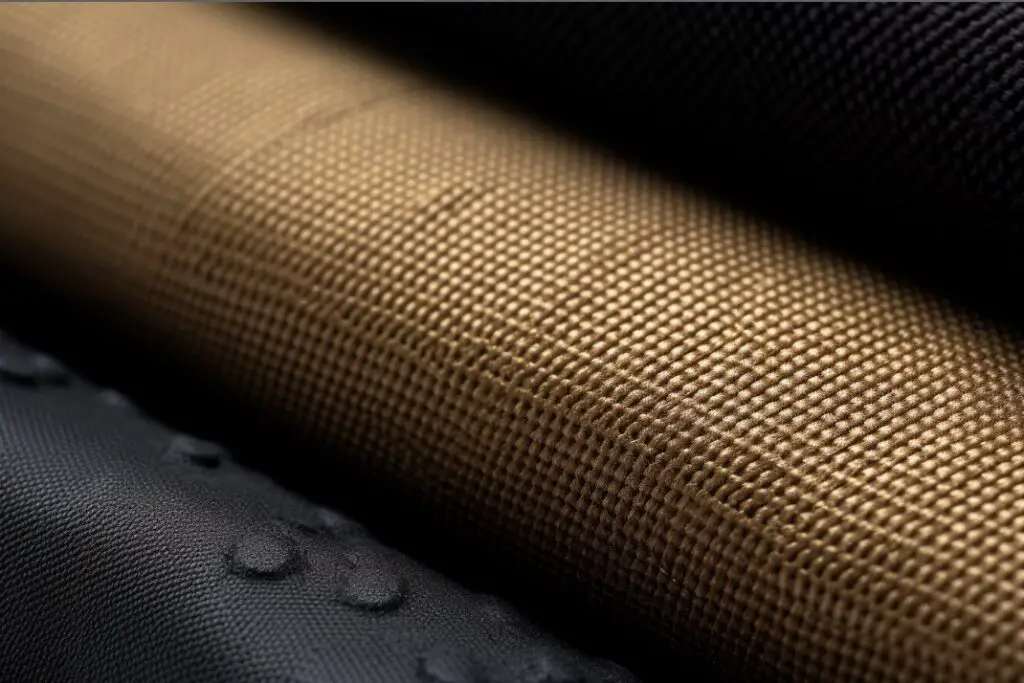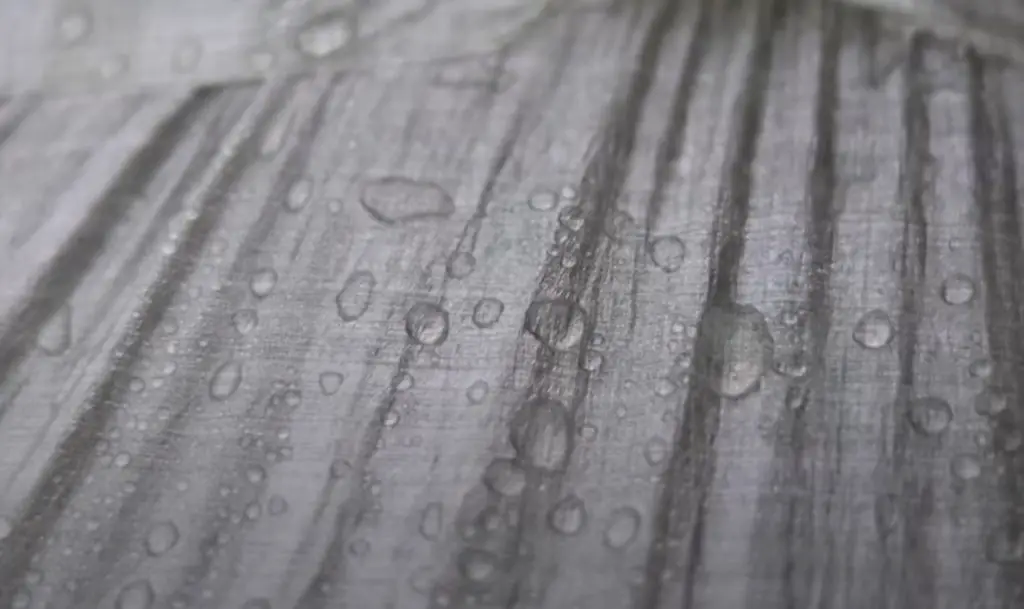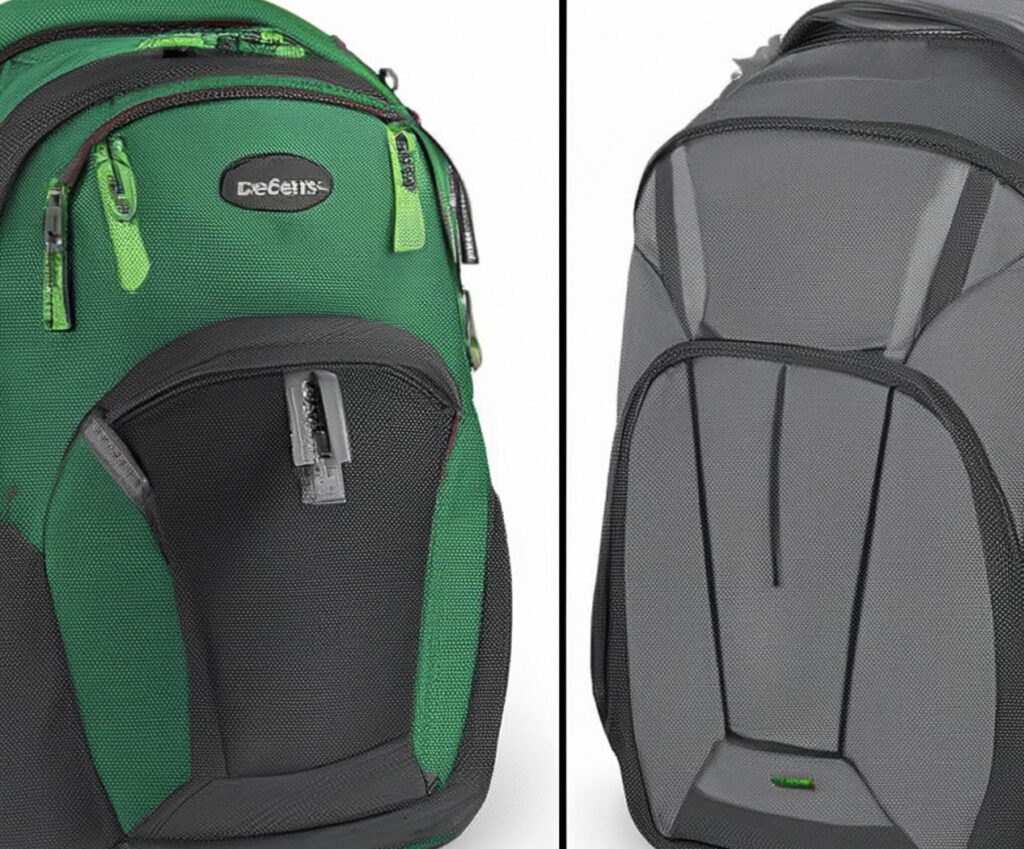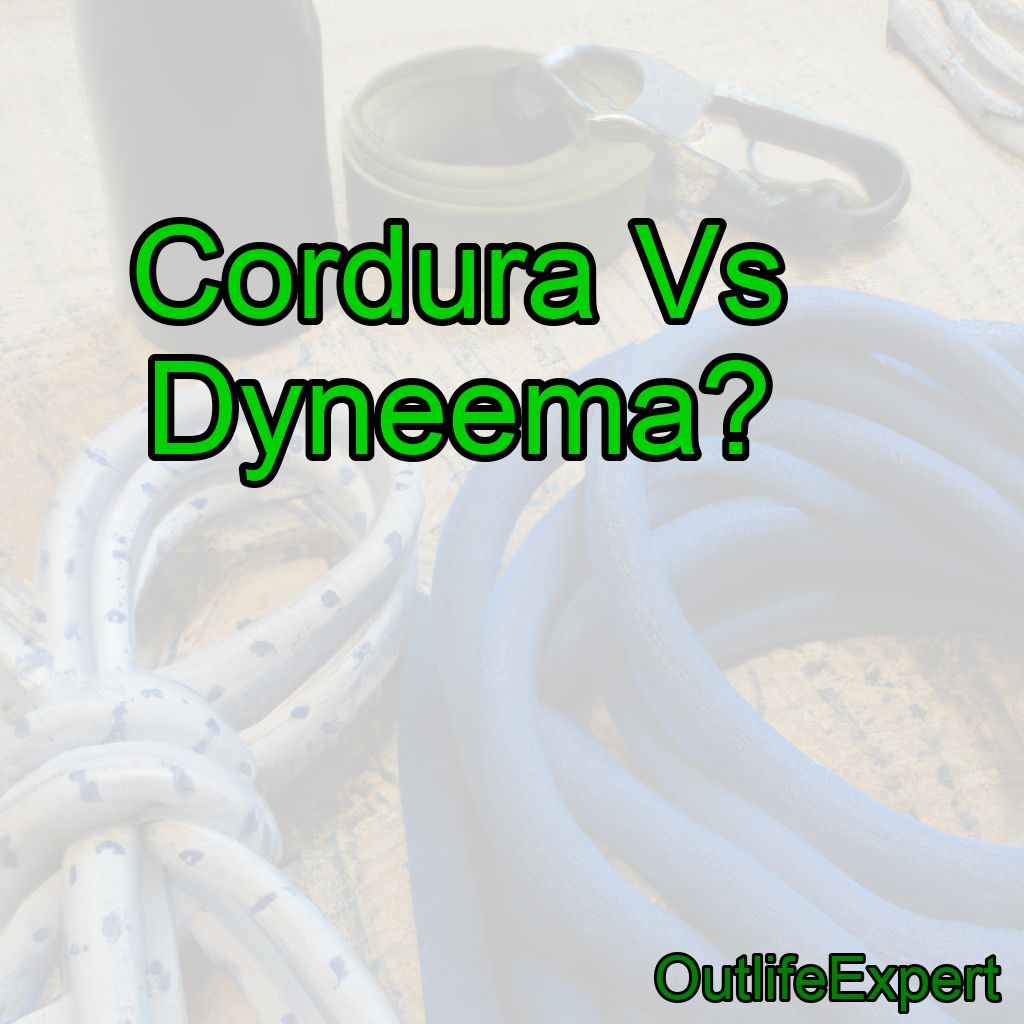When it comes to choosing the right materials for your gear, Cordura and Dyneema are often mentioned.
Both materials are known for their durability, strength, and resistance to wear and tear, but which one is the better option?
In this blog post, we will delve deep into the world of Cordura and Dyneema, comparing their properties, applications, and pros and cons, so you can make an informed decision on which fabric to choose for your next adventure.
Cordura vs Dyneema: What’s the Difference?
Cordura and Dyneema are both synthetic fabrics, but they differ in terms of their composition, manufacturing process, and properties.
In short:
Cordura is a nylon derived fabric that is rough and durable. It is best for heavy duty pants, backpacks and jackets.
Dyneema, on the other hand, is super strong for its weight but is a bit brittle and not super wear and tear resistant. It is mostly used for lightweight applications that need to be waterproof such as tents or rain gear.
Here’s a detailed comparison of the two materials:
Cordura
Cordura is a brand name for a series of nylon fabrics developed by INVISTA (formerly DuPont). It is known for its durability and resistance to abrasions, tears, and scuffs. Cordura fabrics are made using high tenacity fiber technologies, which give them superior strength and durability compared to regular nylon fabrics.

Properties of Cordura
1.High strength: Cordura fabrics are up to four times stronger than regular nylon fabrics, thanks to their high tenacity fibers.
2.Abrasion resistance: Cordura is highly resistant to abrasions, making it an ideal choice for heavy-duty applications.
3.Tear resistance: Due to its strong fibers, Cordura is less likely to tear or rip, even under heavy use.
4.Water resistance: Cordura fabrics are often treated with a durable water repellent (DWR) finish, which makes them highly water-resistant.
Dyneema
Dyneema is a brand name for a family of ultra-high-molecular-weight polyethylene (UHMWPE) fibers produced by DSM. Dyneema is known for its incredible strength-to-weight ratio, which makes it one of the strongest and lightest materials available.

Properties of Dyneema
1.Incredible strength-to-weight ratio: Dyneema is 15 times stronger than steel on a weight-for-weight basis, making it an excellent choice for lightweight applications.
2.Resistance to cutting and punctures: Dyneema is highly resistant to cutting and punctures, which makes it suitable for protective gear like gloves and body armor.
3.UV and chemical resistance: Dyneema fibers have excellent resistance to ultraviolet (UV) radiation and chemicals, ensuring a long-lasting performance.
4.Low moisture absorption: Dyneema fibers absorb very little moisture, making them ideal for use in wet environments.
Applications of Cordura and Dyneema
Both Cordura and Dyneema have numerous applications due to their unique properties. Here are some of the most common uses for each material:
Cordura
1.Backpacks and bags: Due to its durability and abrasion resistance, Cordura is a popular choice for backpacks, luggage, and other heavy-duty bags.
2.Clothing: Cordura is often used in outdoor clothing, such as jackets, pants, and gloves, due to its water resistance and durability.
3.Military gear: Cordura’s strength and durability make it an ideal choice for military gear, such as tactical vests and pouches.
Dyneema
1.Ropes and slings: Dyneema’s incredible strength-to-weight ratio makes it an excellent choice for ropes, slings, and other load-bearing applications.
2.Protective gear: Due to its resistance to cutting and punctures, Dyneema is often used in protective gloves and body armor.
3.Sails and nautical equipment: Dyneema’s low moisture absorption and UV resistance make it ideal for sails and other nautical equipment.
Overall Pros and Cons of Cordura and Dyneema
Each material has its own set of advantages and disadvantages, which can make the decision between Cordura and Dyneema a bit challenging. Here’s a rundown of the pros and cons of each material:
Cordura Pros
1.Durability: Cordura is known for its exceptional durability, which makes it an excellent choice for heavy-duty applications.
2.Water resistance: Cordura fabrics are often treated with a DWR finish, which makes them highly water-resistant.
3.Wide range of applications: Cordura’s properties make it suitable for a variety of uses, from backpacks and clothing to military gear.
Cordura Cons
1.Weight: Cordura is heavier than Dyneema, which can be a disadvantage for lightweight applications.
2.Not as strong as Dyneema: While Cordura is a strong and durable fabric, it doesn’t have the incredible strength-to-weight ratio of Dyneema.
Dyneema Pros
1.Incredible strength-to-weight ratio: Dyneema’s strength-to-weight ratio makes it one of the strongest and lightest materials available.
2.Resistance to cutting and punctures: Dyneema’s resistance to cutting and punctures makes it ideal for protective gear.
3.UV and chemical resistance: Dyneema’s resistance to UV radiation and chemicals ensures a long-lasting performance.
Dyneema Cons
1.Cost: Dyneema is generally more expensive than Cordura, which can be a drawback for budget-conscious consumers.
2.Limited applications: While Dyneema is incredibly strong and lightweight, it may not be suitable for all applications, such as those requiring high abrasion resistance.
Is dyneema or cordura best for backpacks?

Choosing between Dyneema and Cordura for backpacks depends on your specific needs and preferences, as each material has its unique strengths:
Dyneema:
- Lightweight: Dyneema is known for its exceptional strength-to-weight ratio, making it one of the lightest backpack materials available.
- Durability: It’s highly resistant to abrasion and tearing, ensuring a long lifespan.
- Water Resistance: Dyneema is naturally water-resistant, which can be a significant advantage in wet conditions.
- Cost: Typically, Dyneema is more expensive than Cordura, reflecting its advanced properties.
- Feel and Aesthetics: It often has a more crinkly and less traditional fabric feel, which might not appeal to everyone.
Cordura:
- Toughness: While slightly heavier, Cordura is renowned for its durability and resistance to abrasions, tears, and scuffs.
- Versatility: It’s used in a wide range of products from lightweight to heavy-duty gear, offering more options in terms of backpack styles and designs.
- Cost-Effectiveness: Generally, Cordura is more affordable than Dyneema, making it a popular choice for those on a budget.
- Feel and Aesthetics: It has a more traditional fabric feel compared to Dyneema and comes in various textures and colors.
Ultimately, the best choice depends on your priorities:
- If you prioritize ultralight gear and are willing to invest more, Dyneema might be the better choice.
- If you’re looking for a durable, cost-effective option with a traditional feel, Cordura could be more suitable.
Each material excels in different areas, so consider what aspects are most important for your backpacking needs.
Conclusion: Cordura vs Dyneema – Which is the Better Choice?
In conclusion, both Cordura and Dyneema have their unique advantages and drawbacks. Cordura is a more durable and abrasion-resistant material, making it ideal for heavy-duty applications like backpacks, clothing, and military gear.
On the other hand, Dyneema’s incredible strength-to-weight ratio and resistance to cutting and punctures make it suitable for lightweight applications and protective gear.
Ultimately, the choice between Cordura and Dyneema will depend on your specific needs and preferences.
10 Facts About Cordura and Dyneema:
1. Cordura is a brand name for a series of nylon fabrics developed by INVISTA.
2. Dyneema is a brand name for a family of ultra-high-molecular-weight polyethylene (UHMWPE) fibers produced by DSM.
3. Cordura fabrics are up to four times stronger than regular nylon fabrics.
4. Dyneema is 15 times stronger than steel on a weight-for-weight basis.
5. Cordura is highly resistant to abrasions, tears, and scuffs.
6. Dyneema is highly resistant to cutting and punctures.
7. Cordura fabrics are often treated with a durable water repellent (DWR) finish.
8. Dyneema fibers have excellent resistance to ultraviolet (UV) radiation and chemicals.
9. Cordura is commonly used in backpacks, clothing, and military gear.
10. Dyneema is frequently used in ropes, protective gear, and sails.
FAQs
Is Cordura abrasion resistant than Dyneema?
Yes, Cordura is generally considered to be more abrasion resistant than Dyneema. Cordura is a nylon fabric that is known for its durability and resistance to wear and tear, while Dyneema is a high-strength polyethylene fiber that is primarily used for its strength and low weight. While Dyneema is incredibly strong and resistant to cuts and punctures, it is not as abrasion resistant as Cordura.
Is Cordura abrasion resistant?
Yes, Cordura is known for its high abrasion resistance and durability. It is often used in the manufacturing of outdoor and military gear, such as backpacks, tents, and jackets, due to its ability to withstand wear and tear.
Is Cordura fabric worth it?
Yes, Cordura fabric is worth it as it is highly durable and resistant to abrasion, tearing, and punctures. It is commonly used in outdoor gear, military gear, and workwear due to its strength and longevity.
What is similar to Cordura fabric?
Nylon and polyester fabrics are similar to Cordura fabric in terms of durability and abrasion resistance.
Is Cordura the same as nylon fabric?
Cordura is a type of nylon fabric that is known for its durability and resistance to abrasions, tears, and scuffs.
How durable is Cordura?
Cordura is a highly durable fabric that is resistant to abrasions, tears, and scuffs. It is made from high-strength nylon fibers that are woven together in a tight, dense pattern, making it ideal for use in outdoor gear, military equipment, and other applications where durability is essential. The exact level of durability will depend on the specific Cordura fabric used and how it is constructed, but in general, it is considered to be one of the most durable fabrics available.




